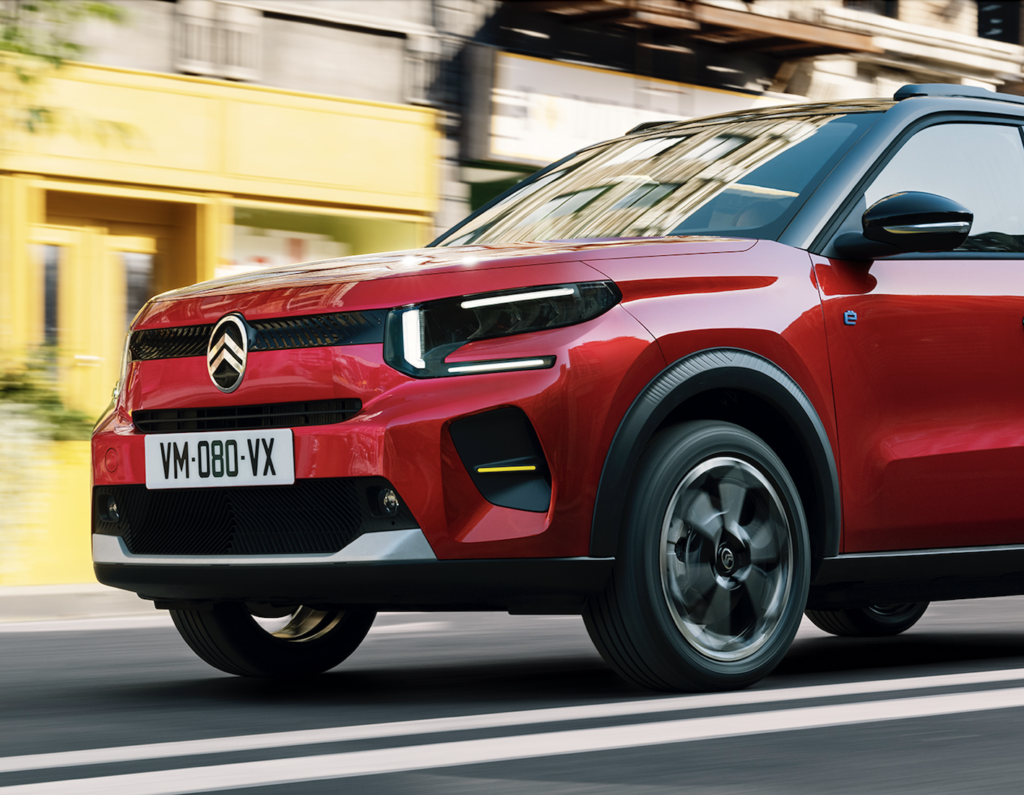
Will this 4th generation Citroën C3 be providential and, like the messiah, “establish an order of justice and happiness” in the range? Justice? Yes, because until now, the brand seemed to have been neglected by the Stellantis group. The last big news is the 4-door version of the C4: the C4X, while this new C3, when it goes on sale in the second quarter of 2024, will replace a model that is almost eight years old. It was time for Citroën to shake things up to regain its place in the European markets and, above all, to ensure its viability.
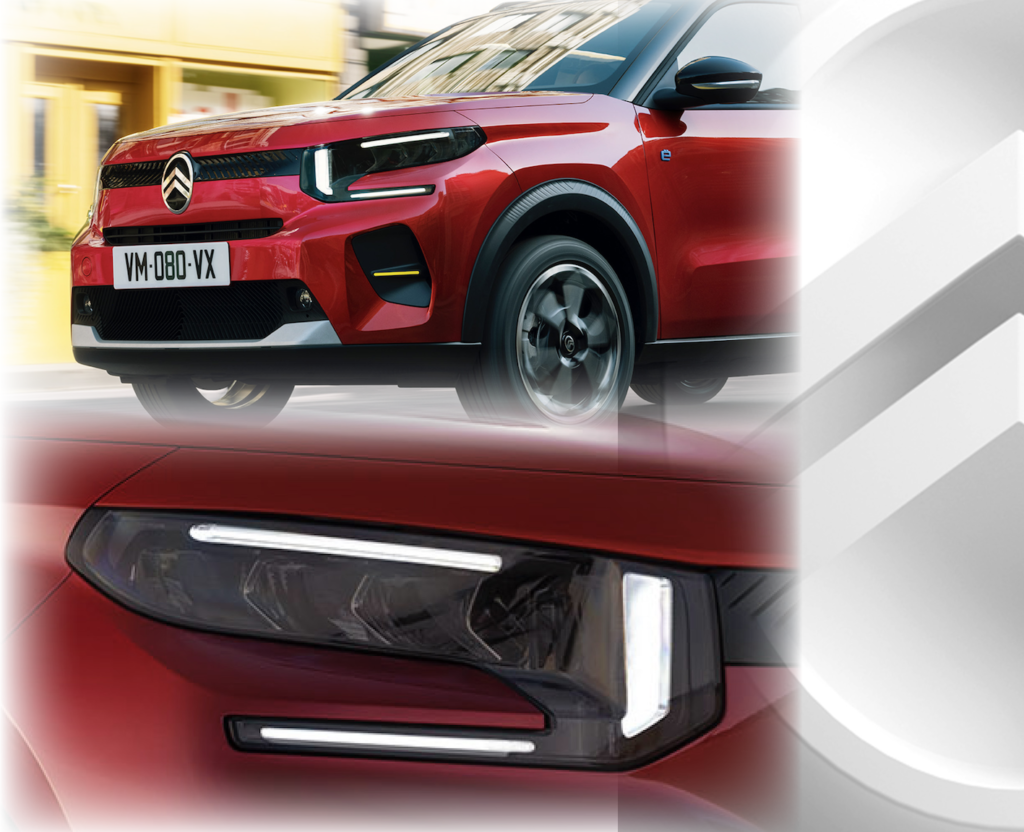
LIGNES/auto brings you a 22-page magazine featuring the C3, with new photos and subjects. For easy reading on tablets and computers, this PDF can be read just like a paper magazine! And it’s free… Take the time to download it here:
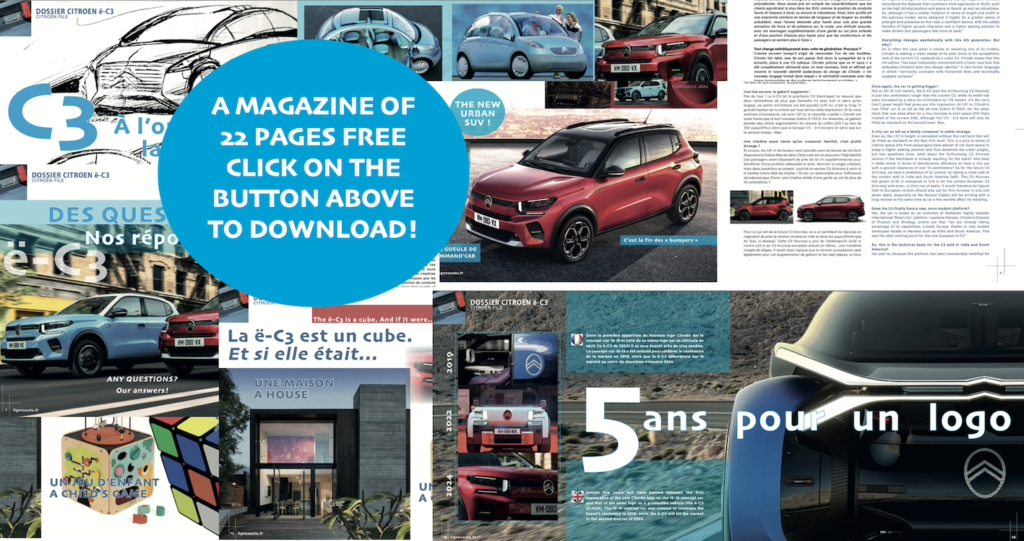
Why on earth would an SUV replace a dynamic city car?
It’s true that when you first see the new ë-C3, you think that once again the SUV theme (or rather the crossover theme, because the ë-C3 is a two-wheel drive) has taken over. With good reason? Pierre Leclercq, Citroën’s Director of Design, assumes responsibility for these architectural and stylistic choices: “We believe that the all-new Citroën ë-C3 will be a game-changer in the multi-purpose city car segment. We have taken into account the features that customers appreciate most in SUVs, such as the high driving position and space on board, as well as robustness.
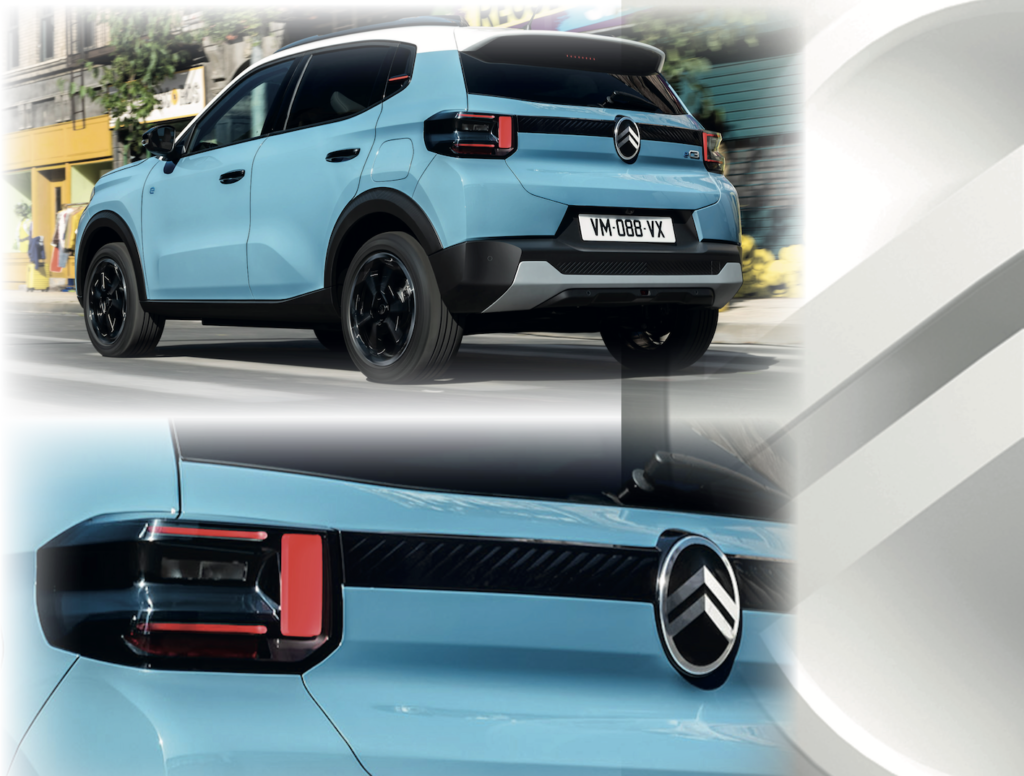
“So, while it has a similar footprint in terms of length and width to the previous model, we’ve designed it higher for a greater sense of strength and presence on the road, a confident attitude, with the added benefits of higher ground clearance and a higher seating position to make drivers and passengers feel more comfortable.”
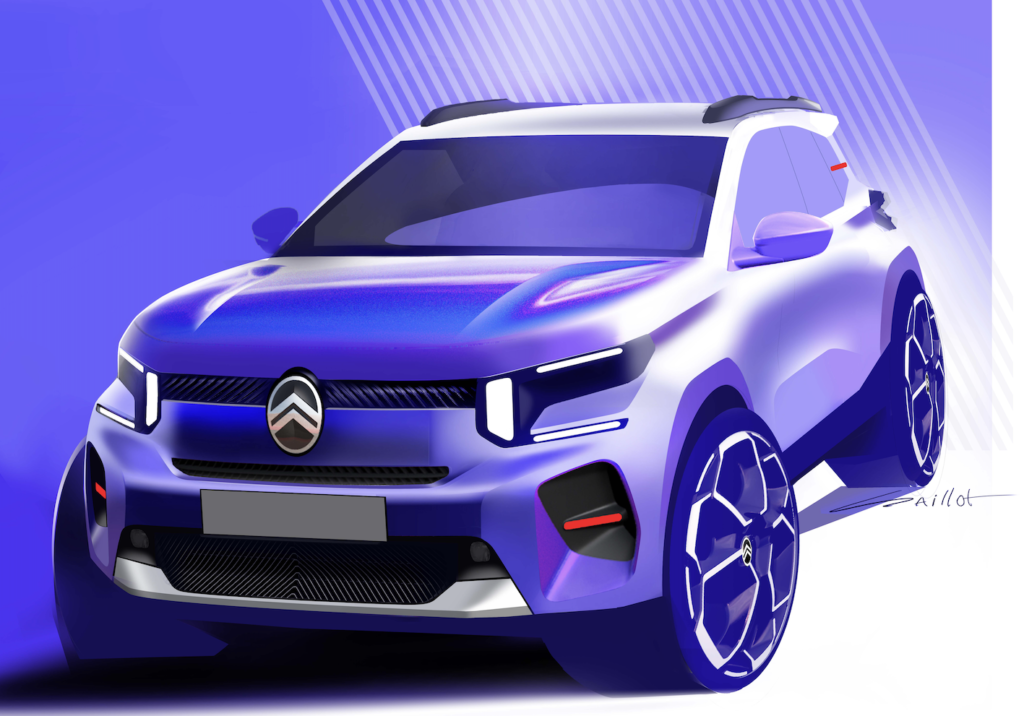
Everything changes aesthetically with this 4th generation. Why should this be?
As is often the case when it comes to renewing one of its models, Citroën is making a clean sweep of its past. Gone, then, is the friendly look of the current C3, replaced by a cube-shaped C3: the new generation’s design has been canned! Citroën states that this 4th opus “has been completely reinvented with a new, fresh and assertive look that embodies Citroën’s bold new design identity”. A new formal language in which “verticalitý contrasts with horizontal lines and technically sculpted surfaces.”
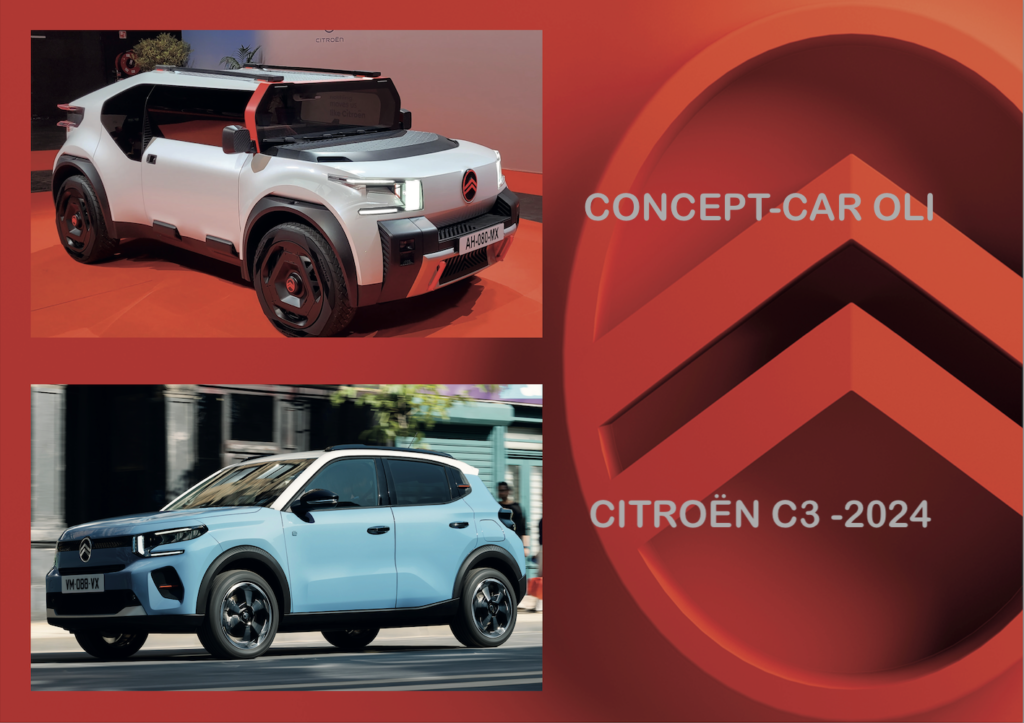
There’s something of the Oli concept car (above) in this C3…
Yes, you may have noticed that the Oli concept car has left its mark on the design of the C3. We’re thinking, of course, of the brutal verticality of the front end and the all-new light signature that signals the end of the V-shaped LEDs. Above all, the oval logo has appeared, five years after its first appearance on the 19_19 concept car. This logo was finalised at the presentation of Oli last year. At the rear, it takes its place in the centre of a black band, in the Peugeot style. Except that on the recent e-3008, Peugeot has not affixed its logo to the rear of its crossover. Surprising…
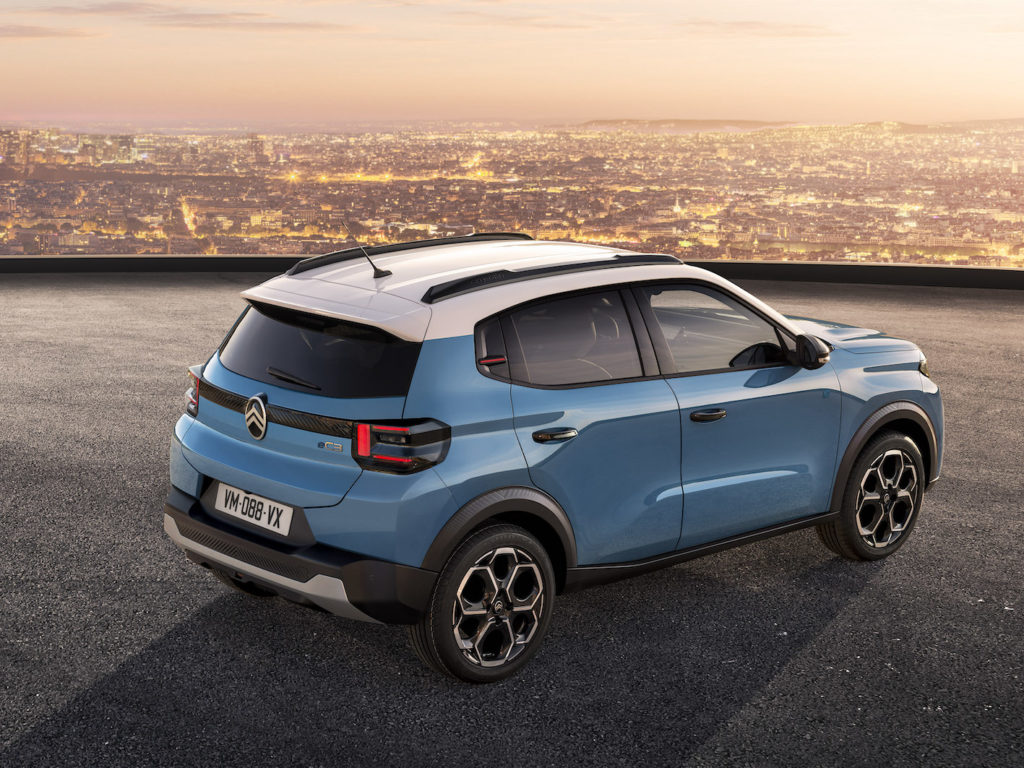
Once again, the size is increasing!
Not at all! The ë-C3 (and the next thermal C3) is only two centimetres longer than the current C3 at 4.01 m, while in width, six millimetres have been added (1.76 m). It’s the car’s (too?) great height that gives you this impression. At 1.57 m, Citroën’s new ‘little’ car is as tall as the all-new Scénic E-TECH. Incredible (below)!

On the other hand, this size does allow for a very small increase in boot volume (310 litres instead of the current 300), although the 1/3 – 2/3 bank will only be standard on the second level: Max.
A city car as tall as a family crossover, that’s rather strange?
And even then, the 1.57 m height is calculated without the roof bars that come as standard with the Max trim level. This is a plus in terms of interior space (the front passengers have almost 10 cm more space to enjoy a higher seating position and thus ‘dominate’ the urban jungle), but two questions arise: what about the forthcoming C3 Aircross version if the hatchback is already reaching for the stars? And does it make sense in terms of aerodynamic efficiency to have a city car with a ground clearance of over 16 centimetres?
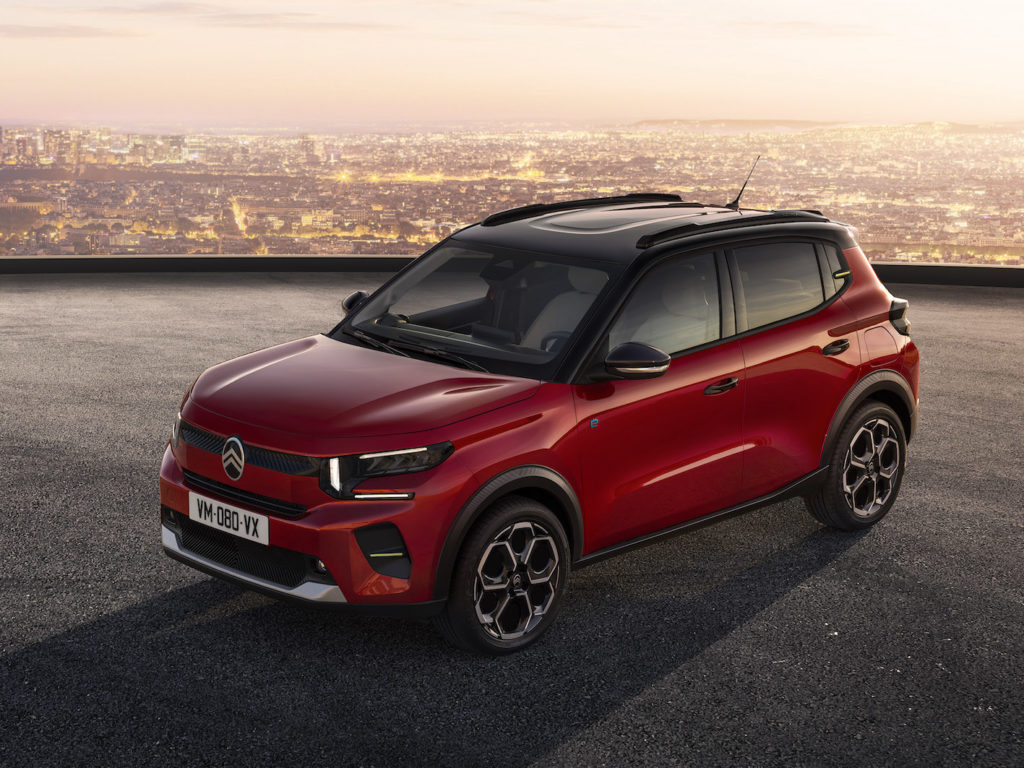
As for the future C3 Aircross, we have a semblance of an answer by taking a close look at the version sold in India (below) and in South American countries. This C3 Aircross has grown in size (4.32 m compared to 4.16 m for the current European C3 Aircross) and even… a third row of seats. It would therefore be logical that its European version should also opt for this increase in size and seven seats, especially as the Renault Captur will be arriving with a long version at the same time as (or a few months after) its restyling.
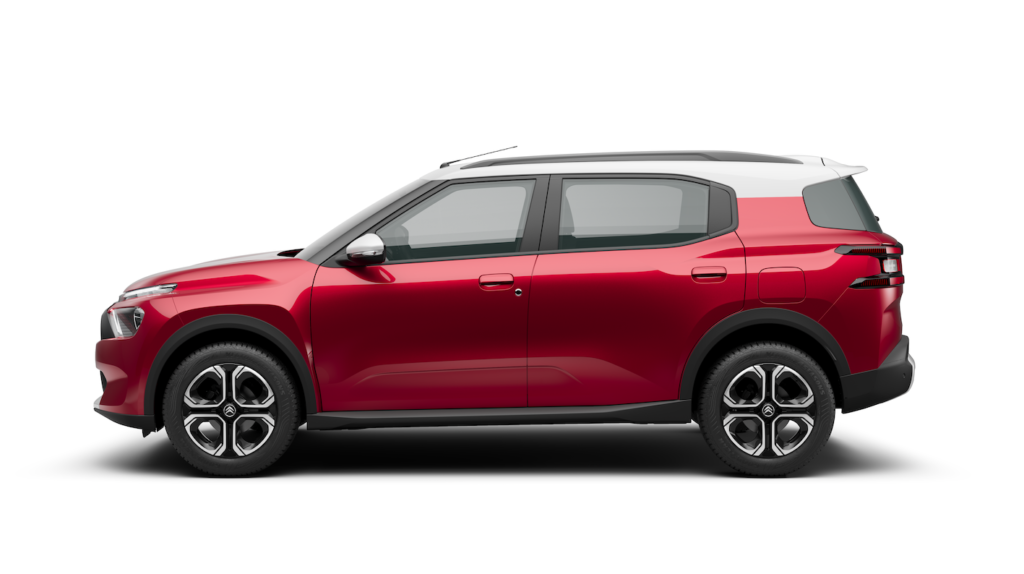
And what can we say about the styling?
Once again, Citroën is making a clean sweep of previous generations. After the ‘bubble’ saloon in 2002, the sensible city car in 2009 and the dynamic customisable saloon in 2016, here is a cube which, despite being 4 metres long, is reassuringly robust and spacious. You can sit back and enjoy the ride. In pure styling terms, we regret that the new formal language, which adapted well to Oli, a one-off concept car below, has a little more difficulty on the basis of this platform.
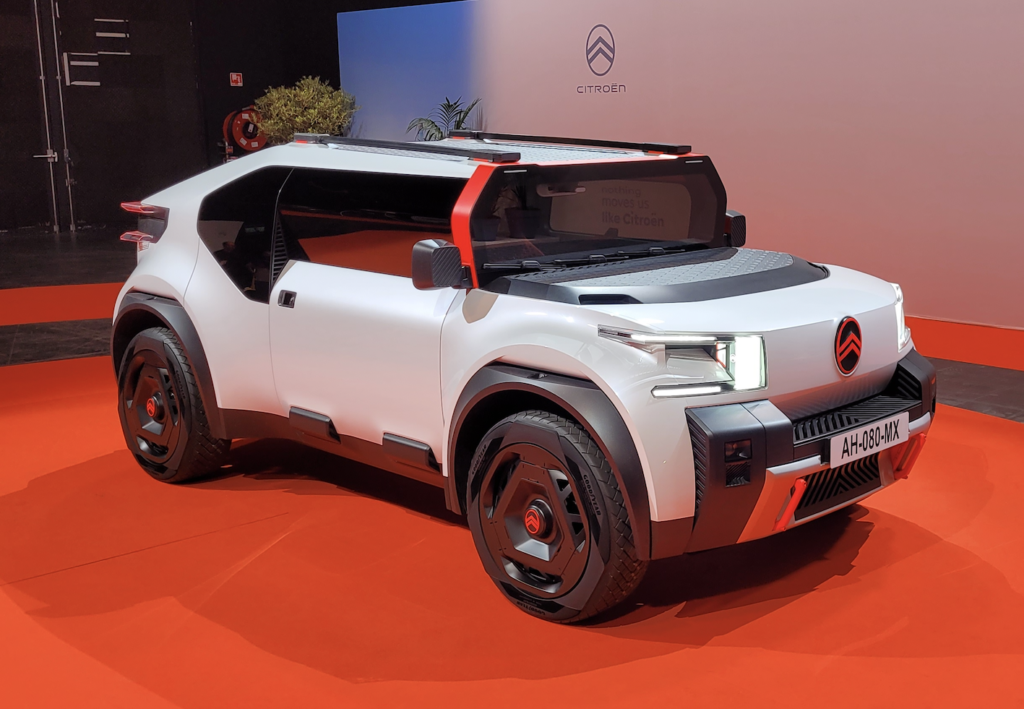
The designers have been forced to rework the hard points of the Indian version and, above all, the new design language – based on verticality and straight lines – does not work well with the entire windscreen and awning at the base of the latter. The windscreen would have deserved to be a little more vertical. Unfortunately, this is an area where designers can do little or nothing: the entire structure of the windscreen bay is largely transverse in the package on models of this size in the group, and, along with the positioning of the windscreen pillars, it contributes to resistance in the event of a frontal crash. In short, the windscreen seems too inclined and there is a lack of coherence in this area, between the new front and rear design language and, in the middle, a much more conventional block. The overall proportions are rather unusual. But before we see a vertical windscreen, we’ll have to wait a long time!
Does the C3 finally have a new, more modern platform?
Yes, the C3 is based on an evolution of Stellantis’ highly modular international ‘Smart Car’ platform. Laurence Hansen, Citroën’s Director of Product and Strategy, points out that “we are already taking advantage of its capabilities outside Europe, thanks to new models developed locally in markets such as India and South America. This was the ideal starting point for the new European ë-C3.”
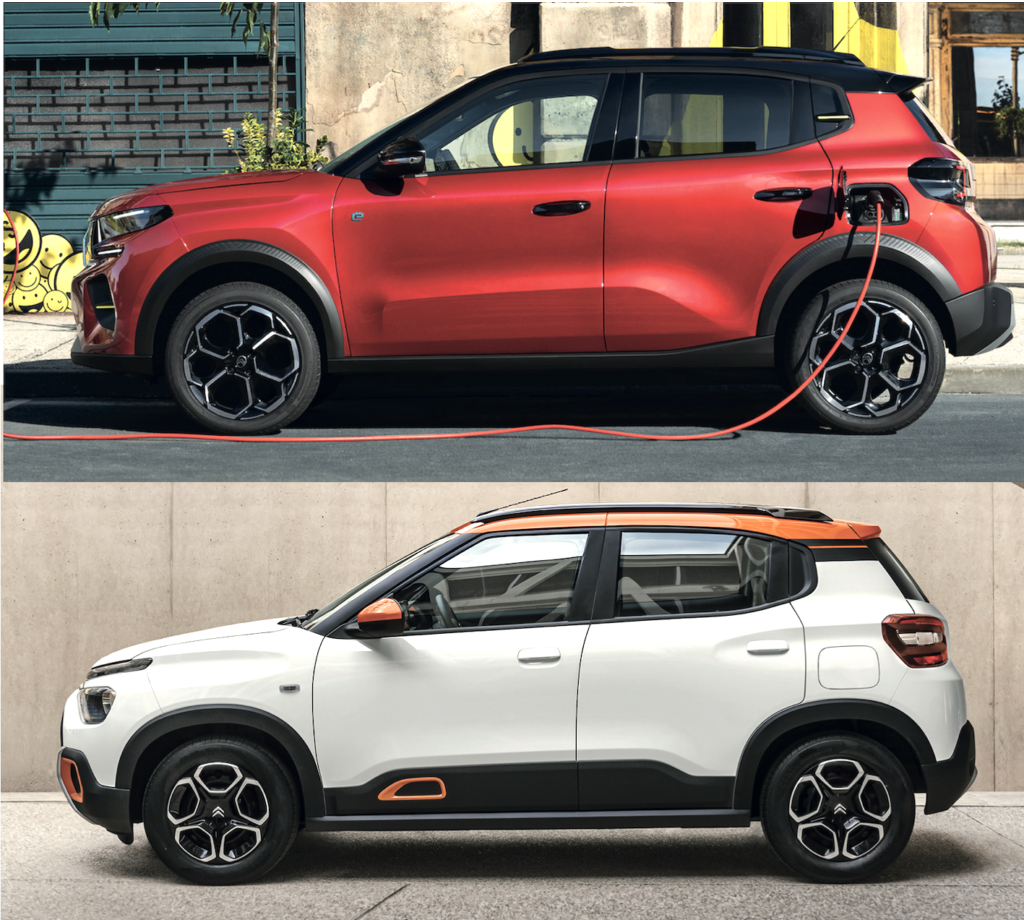
So this is the technical basis of the C3 sold in India and South America?
Yes and no, because this platform has been considerably modified for European models such as the ë-C3. For example, it incorporates a host of equipment modules, including driving aids, which are not present on the Indian or Brazilian versions. Without prejudging the EuroNcap tests, we can also assume that the European version will obtain better results than the Brazilian version (which won’t be difficult…). Above all, however, the running gear is completely different, as all versions are fitted with dual progressive hydraulic bumpers. The ë-C3 also introduces a new generation of Advanced Comfort seats, which are available on both You and Max trim levels.
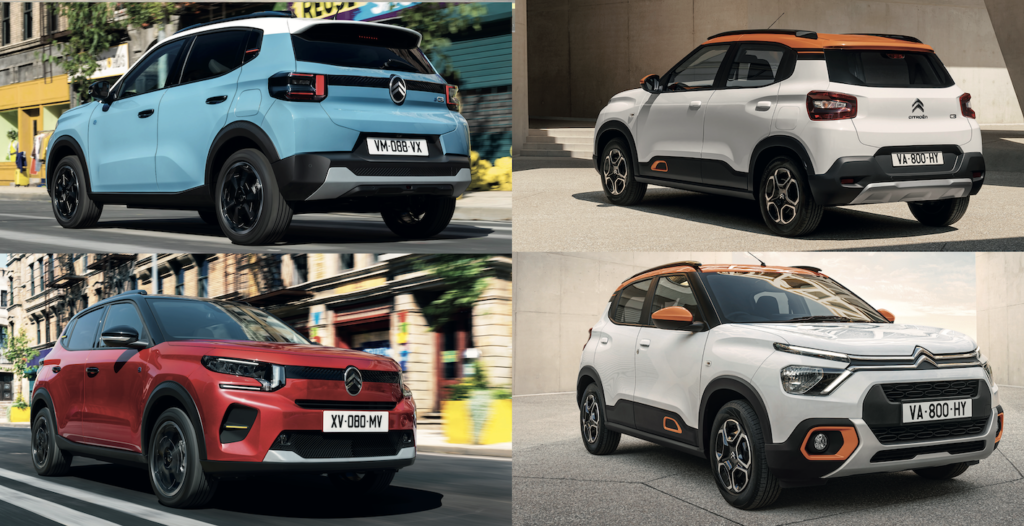
Will the C3 no longer offer an internal combustion engine?
Yes, of course. Laurence Hansen points out that “although it was designed from the outset to be entirely electric, the Smart Car platform is flexible enough to accommodate internal combustion engine powertrains, and to support larger or smaller vehicles, including SUVs”. Citroën’s product department confirms that the C3 “heralds a C3 family that will play a major role in strengthening the European range and embody the brand’s values”.
Citroën has announced a sale price of around €25,000. Is the promise kept?
Not only has it been kept, but it is even more favourable for the customer, since the starting price of the European ë-C3 will start at €23,300 net, for a You version equipped with a 113 bhp electric motor, a 44 kWh battery (Lithium Iron Phosphate) and a range of 320 km. Top speed will be 135 km/h.
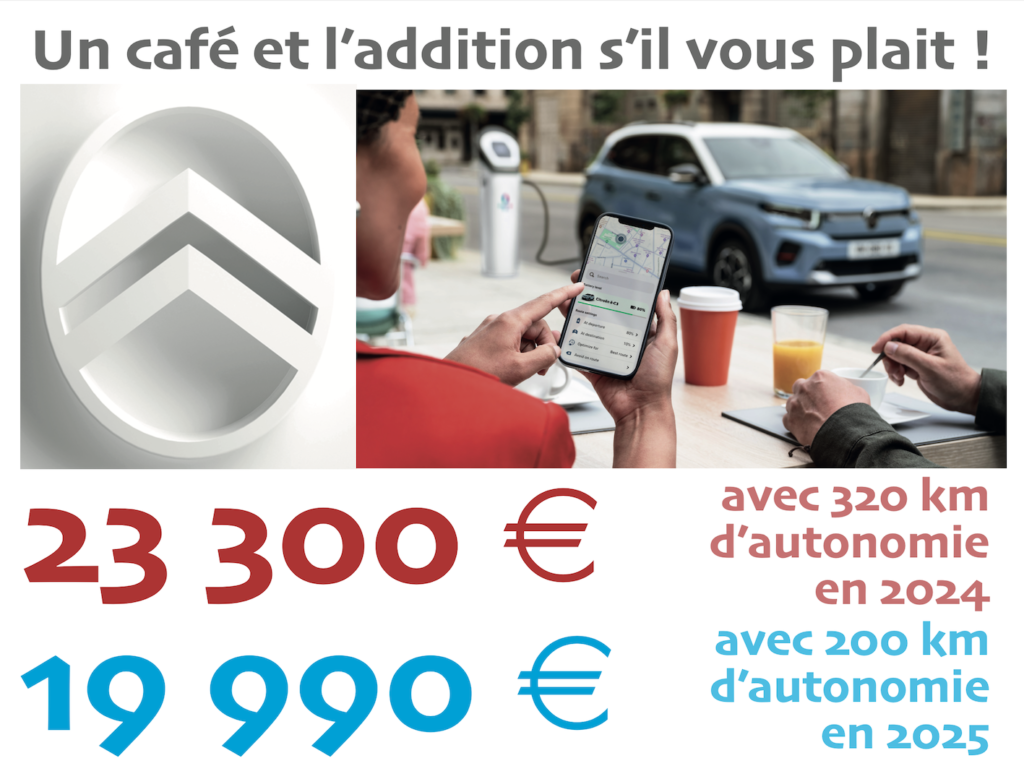
In 2025, around the same time as the Volkswagen ID2 and Renault 5 come onto the market, Citroën will offer a second version with a range of 200 km at €19,990. We wonder about the one-year delay between the launch of the two variants, as technically these are modifications that do not affect the structure of the vehicle. Could this be a decision taken during development? To be continued…
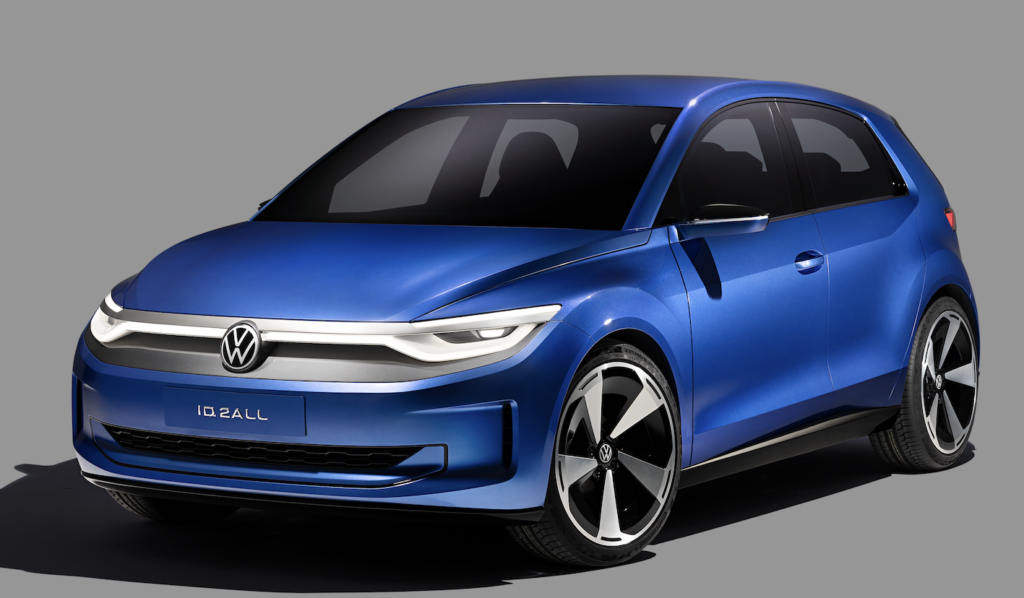
On board, Citroën is introducing a new C-Zen Lounge design. What does this mean?
It’s a horizontal dashboard, like all Citroëns, divided into two levels. The upper level is dedicated to information, and the central level to comfort. The latter is covered in Sofa Design fabric. Surprisingly, there is no instrument cluster facing the driver.
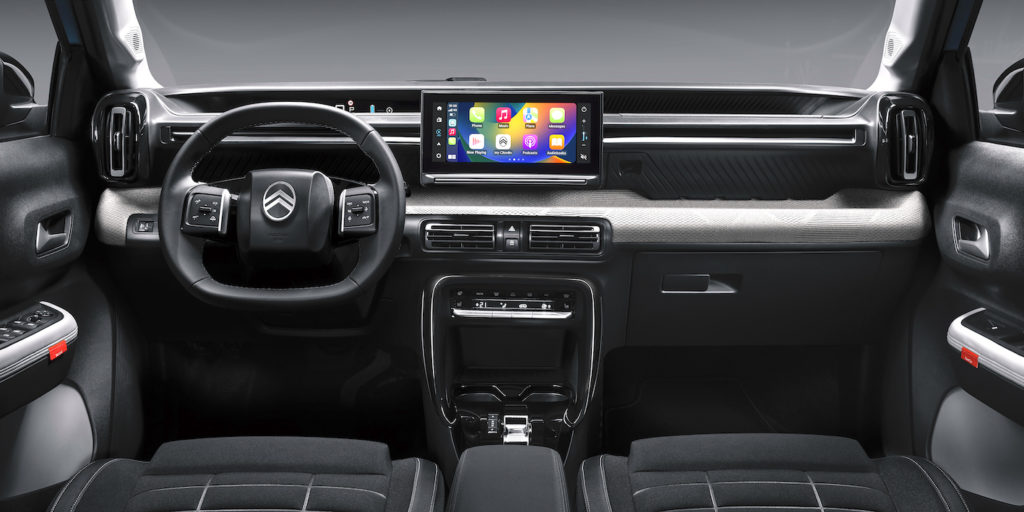
It is replaced by a ‘Head Up Display’ projection on a gloss black section located between the base of the windscreen and the dashboard cover. Simpler than projecting directly onto the windscreen, as on the future BMW Neue Klasse of 2025, this architecture is impressive for a small car. A floating 10.25-inch screen sits higher than usual in the centre of the dashboard.
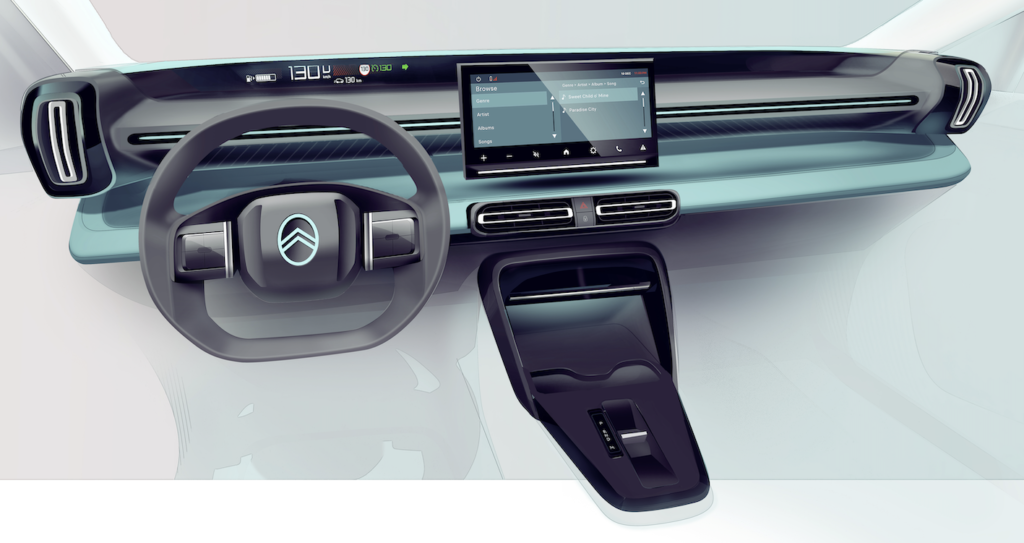
Citroën mentions a small steering wheel. Is this a copy of Peugeot’s i-Cockpit?
The new dashboard with its so-called ‘head-up’ projection means that the diameter of the steering wheel has to be reduced to ensure good visibility of the information. This is exactly what Peugeot followed when it ‘invented’ the i-Cockpit. Unlike the Citroën, however, the i-Cockpit is not based on a head-up display, but on a raised instrument cluster.
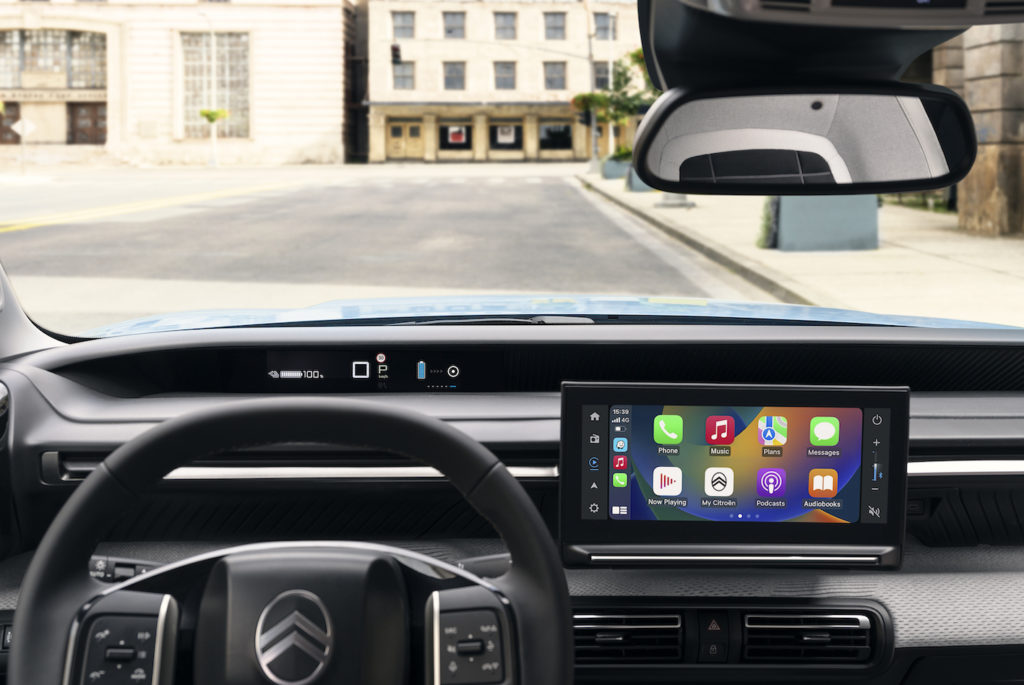
However, it is true that the two architectures have a lot in common. So it’s about time that the Hypersquare concept of the future 208 and 2008 hit the streets in 2026. It’s worth noting that the C3’s Design Project Manager, Boris Reinmöller, comes from Peugeot (below).
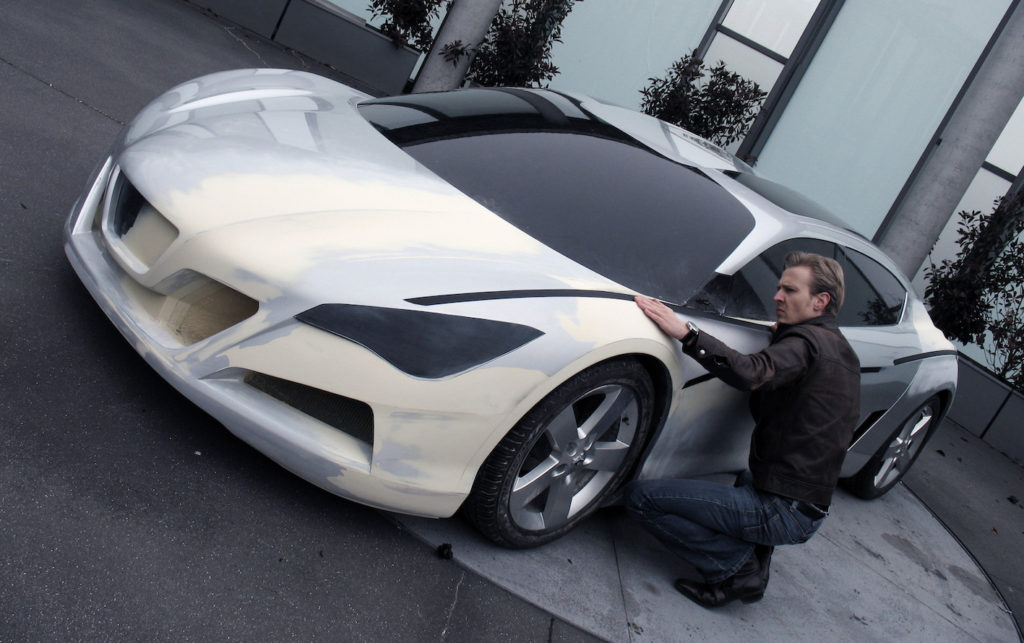
Did he invent the i-Cockpit?
No. This architecture was thought up by the phase advance team, which includes Pierre Rémond and the designer Yong Wook Sin, who came up with the idea of the i-Cockpit. On the other hand, Boris Reinmöller at Peugeot is responsible for the design of the 2008 RC Hybrid4 concept car and, above all, the design of the RCZ coupé!
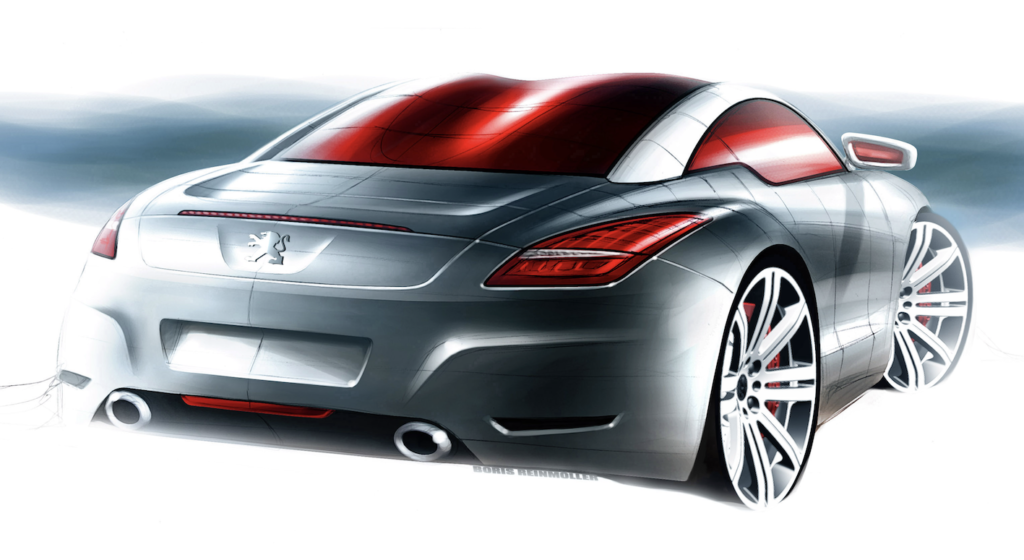
Boris Reinmöller has had a successful career with Peugeot and is now with Citroën. The Stellantis group, with its 14 brands, offers this possibility of transferring designers internally. Another great Peugeot designer, Sylvain Henry, followed the same path from Peugeot – where he designed the first generation 208, below, which introduced the i-Cockpit – to Citroën.
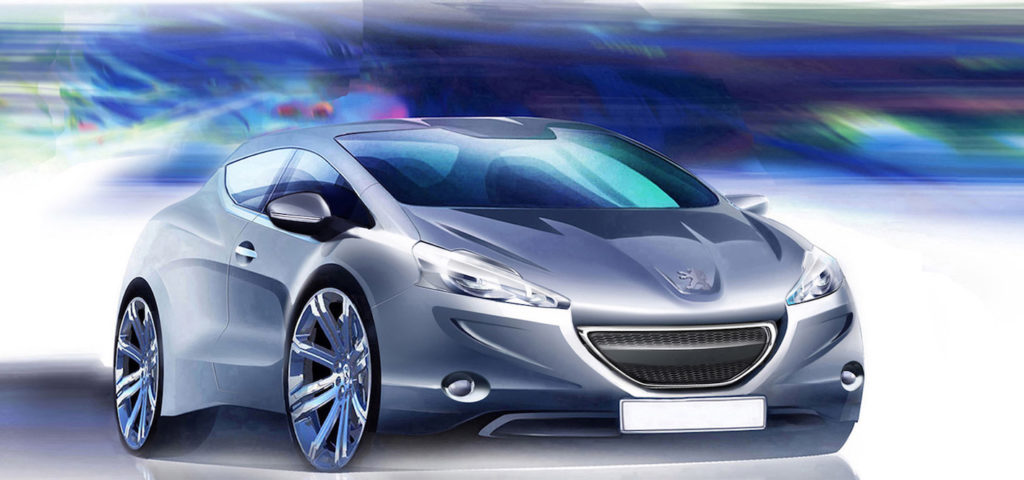
What role is the new Citroën brand director, Thierry Koskas, playing in this project?
Thierry Koskas was appointed head of the Citroën brand on 1 March, in addition to his responsibilities as Sales and Marketing Director of Stellantis. In other words, the C3 project was already set in stone. We must therefore pay tribute to the brand’s previous director, Vincent Cobée, whose strained relations with the Group’s management precipitated his departure (below, Vincent Cobée on the right with Pierre Leclercq and Laurence Hansen in front of the Oli concept car).
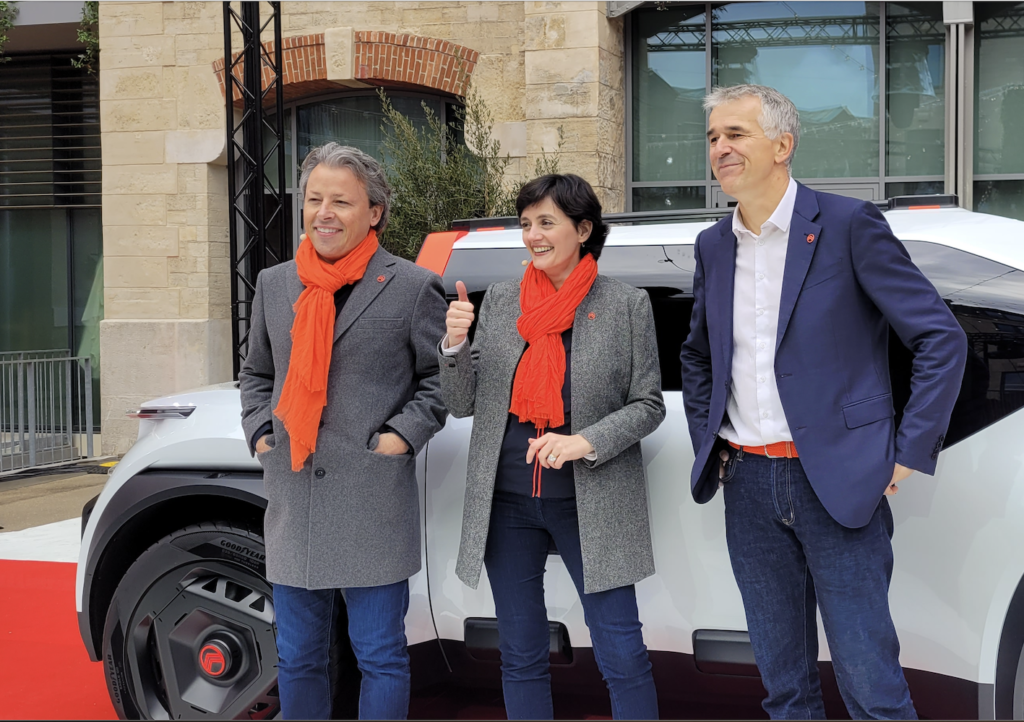
This former Citroën boss was right, as he explained to us in 2022. When asked whether the European C3 would be identical to the Indian version, he replied that it would not. “In Europe, electrification is a major trend, and it is clear that the renewal of the C3 and C3 Aircross range will have a strong position in this area. But at the same time, this electrification is giving rise to more expensive cars. So, faced with an economic crisis that will reduce our customers’ purchasing power, it’s clear that what we’ve learnt from developing this type of programme for high-growth countries will help us to design a replacement for the C3. It was no doubt on the basis of this thinking that the future ë-C3 for under €20,000 was born…
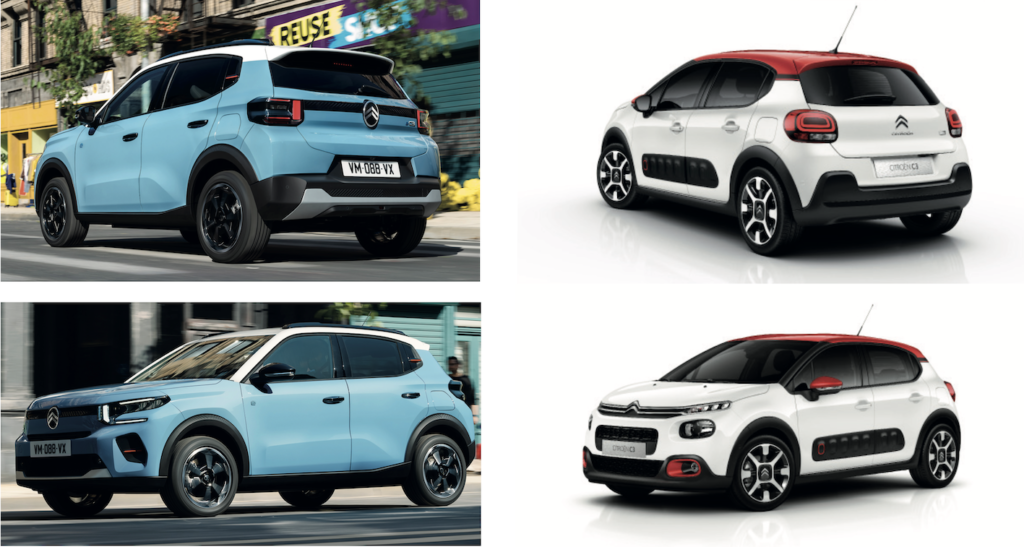
Read about the genesis of the first 3 generations of the C3 here: http://lignesauto.fr/?p=30151

